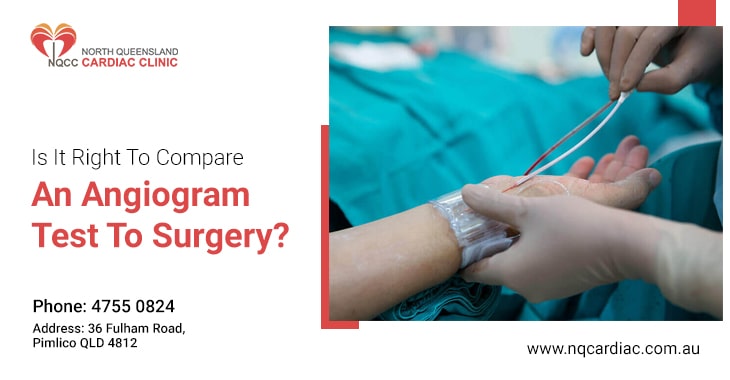In modern medical diagnostics, advancements have ushered in an era where non-invasive procedures are increasingly replacing traditional surgical methods. Angiogram Tests, for instance, have gained prominence as a vital tool in diagnosing cardiovascular issues without resorting to surgery. However, misconceptions sometimes arise when comparing an Angiogram Test to a surgical procedure. At North Queensland Cardiac Clinic (NQCC), the Top Angiogram Test Clinic Pimlico, renowned experts like Dr Dharmesh Anand and Dr Raibhan Yadav are at the forefront of clarifying these misconceptions.
- The Role of Angiogram Test
- Advantages of Angiogram Tests
- Distinguishing Surgery from Angiogram Tests
- Expert Insights from NQCC
The Role of Angiogram Test:
An Angiogram Test, or angiography or arteriography, is a medical imaging technique that employs a special dye and X-ray technology to visualize blood vessels, particularly those in the heart. It is often used to diagnose conditions such as coronary artery disease, blockages, and abnormalities in blood vessels. The procedure helps medical professionals identify potential issues and make informed decisions about further treatment.
Advantages of Angiogram Tests:
Non-Invasive Nature: One of the primary advantages of an angiogram test is its non-invasive nature. Unlike surgical procedures, there is no need for major incisions or extended recovery times. Patients can often return to their daily activities relatively quickly after the procedure.
Accurate Diagnosis: Angiogram tests offer high-resolution images of blood vessels, enabling cardiologists to pinpoint the location and extent of blockages or abnormalities accurately. This precise diagnosis informs the treatment plan and helps avoid unnecessary surgeries.
Minimized Risks: Surgery inherently carries risks related to anesthesia, infection, and postoperative complications. Angiogram tests substantially reduce these risks, making them an appealing choice, especially for patients considered high-risk for surgery.
Distinguishing Surgery from Angiogram Tests:
Procedure and Recovery: Surgery involves physically altering tissue, often with a significant incision. This usually necessitates a longer recovery period and carries a higher risk of complications. On the other hand, an angiogram test involves inserting a catheter through a small incision and is associated with shorter recovery times and reduced risks.
Purpose: Surgery is primarily intended to remove blockages, repair damaged tissues, or correct structural abnormalities. In contrast, an angiogram test is diagnostic, aiming to provide insights into the condition of blood vessels and aid in formulating an appropriate treatment plan.
Expert Insights from NQCC:
Dr Dharmesh Anand, a leading cardiologist at NQCC, emphasizes, “Comparing an angiogram test to surgery is like comparing apples and oranges. Both have distinct purposes and applications. Angiogram tests are incredibly valuable in diagnosing heart conditions accurately, without subjecting patients to the inherent risks and recovery challenges associated with surgery.”
Dr Raibhan Yadav, another esteemed expert at NQCC, adds, “Patients must understand that these two procedures serve different roles. While an angiogram test provides a detailed roadmap of the patient’s cardiovascular health, surgery steps in when physical intervention is necessary. The right diagnostic approach ensures that treatments are tailored to individual needs.”
Closing Words
The line between diagnostics and surgical procedures is drawn in modern medicine, and each has its rightful place. An Angiogram Test and surgery serve distinct purposes and are not directly comparable. The North Queensland Cardiac Clinic experts, including Dr Dharmesh Anand and Dr Raibhan Yadav, stand united in dispelling any confusion surrounding this matter. As medical science advances, these professionals continue to provide accurate diagnoses and targeted treatments, enhancing the quality of cardiovascular care for patients only at our Top Angiogram Test Clinic Pimlico.


